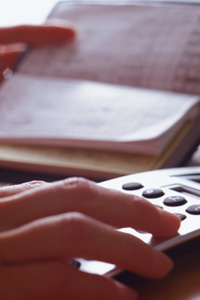Budget Check Up: Tax Time Is the Right Time
Every year, about 140 million households file their federal tax returns.¹ For many, the process involves digging through shoe boxes or manila folders full of receipts; gathering mortgage, retirement, and investment account statements; and relying on computer software to take advantage of every tax break the code permits.
It seems a shame not to make the most of all that effort.
Tax preparation may be the only time of year many households gather all their financial information in one place. That makes it a perfect time to take a critical look at how much money is coming in and where it’s all going. In other words, give the household budget a check-up.
Six-Step Process

One method for doing a thorough budget check-up involves six steps.
- Create Some Categories. Start by dividing expenses into useful categories. Some possibilities: home, auto, food, household, debt, clothes, pets, entertainment, and charity. Don’t forget savings and investments. It also may be helpful to create subcategories. Housing, for example, can be divided into mortgage, taxes, insurance, utilities, and maintenance.
- Follow the Money. Go through all the receipts and statements gathered to prepare taxes and get a better understanding of where the money went last year. Track everything. Be as specific as possible; and don’t forget to account for the cost of a latte on the way to the office each day.
- Project Expenses Forward. Knowing how much was spent in each budget
category can provide a useful template for projecting expenses moving forward. Go through category by category. Are expenses likely to rise in the coming year? If so, by how much? The results of this projection will form the basis of a budget for the coming year. - Determine Expected Income. Add together all sources of income. Make sure to use net income.
- Do the Math. It’s time for the moment of truth. Subtract projected expenses from expected income. If expenses exceed income, it may be necessary to consider changes. Prioritize categories and look to reduce those with the lowest importance until the budget is balanced.
- Stick to It. If it’s not in the budget, don’t spend it. If it’s an emergency, make adjustments elsewhere.
Tax time can provide an excellent opportunity to give your household budget a thorough check up. And taking control of your money could enable you to put more of it to work pursuing your financial goals.
1. IRS, 2017
